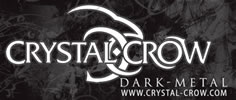NEWPORT, R.I. -- American Michael Russell advanced to the Hall of Fame Championships semifinals by outlasting No. 3 seed Igor Sijsling of the Netherlands 7-6 (3), 6-7 (6), 7-6 (5) on Thursday. Also, French wild card Nicolas Mahut beat Michal Przysiezny of Poland 7-6 (5), 6-4. Russell lost the first three points of the deciding tiebreaker before rallying to reach his second career ATP semifinal. He raised both arms in triumph when Sijsling hit a backhand return long and wide. Russell and Sijsling took centre court after a couple of rain delays pushed back play about two hours. Russell won the final four points of the first tiebreak, but blew a 5-3 lead in the second set. Hydro Flask Coffee 12 Oz . After the whistle, Thornton skated the length of the ice, pulled Orpik to the ice from behind and punched him in the face several times. Hydro Flask Standard Mouth Sports Cap . -- Aldon Smith believes he is on the path to being sober for good. http://www.hydroflaskcoffeesale.com/hydro-flask-coffee-flasks/20-oz-coffee.html . -- The Magic have their first victory of the new year. 24 Oz Standard Mouth Hydro Flask . What general manager Dave Nonis called "short and productive" negotiations ended with Kessel signing a US$64-million, eight-year contract on Tuesday. Hydro Flask 18 Oz Wide Mouth .Y. -- Canadas Kaillie Humphries and Heather Moyse have another World Cup gold medal after winning the two-women bobsled race on Saturday in Lake Placid, N. I dont say that today will provide the answers, but I do think that we manage to unravel some of the mystery. Theres a sincerity to Mark Nicholas as he stares into the camera. He looks almost childlike in appearance: suit slightly oversized, top button done up and tie fastened yet not dovetailing. This isnt the Mark Nicholas who prowls the pristine greens of Australias outfields with the manner of one on top of the food chain. Here he is sitting, shoulders flexed in. Theres uncertainty in the air and he can do little to hide it. The footage rolls.Its July 5, 2004, and Lords is preparing for an England-West Indies ODI. While most of the ground is a hub of noise, as cables are unreeled, fastened and taped, the Nursery Ground is still. Nicholas is in dark trousers and a cream shirt, with sleeves rolled up. Standing next to him, Muttiah Muralitharan is wearing a sleeveless Sri Lanka T-shirt.In conversation Nicholas is clear and concise. Murali stutters, his English sentences crossing a few bumps as they make their way from a mind working in Tamil. Murali is there to prove his worth: to Nicholas, to those operating the cameras, to bystanders who have blagged themselves onto this side of the fence, to those in the production vehicle on site, and in two weeks time, when the footage is to be broadcast during the lunch interval of the England-West Indies Test at Lords, to millions watching. He is here to prove that his 527 Test wickets so far have been achieved fair and square. That, despite what many believe, he is no chucker.With slow, measured gestures, he shows Nicholas what his arm and wrist go through when bowling the offspinner and the doosra. A brace is brought out and put on Murali but it soon comes off as he begins a control spell of two offbreaks, one topspinner and two doosras. He then puts the brace back on, returns to the top of his mark and bowls the same set. Just after his second offspinner - his first was wayward - Nicholas stops him: I am now getting the sense of an illusion. Nicholas wants another look, only this time he wants to take the run-up out of it because of the differences in the load-up, with and without the brace. As before, Murali bowls the offspinner and doosra, and they turn as expected.There is no way the elbow can move here, says Nicholas, emphasising his point by banging down on the pit of Muralis elbow. I put my hand on my heart and I say that.We are returned to the studio, only to be sent back to the footage. This time, only Nicholas stands on the Nursery Ground, with a blue prototype of the brace used by Murali, who has left Lords. Like a sceptical member of the audience who has been serenaded by a magician, Nicholas flicks through the deck of cards. He tries to bowl an offbreak with the brace on. It barely lands on the square. The inability to use his elbow, he says, restricts the ability to bowl the delivery with an orthodox action.After a commercial break, former Middlesex medium-pacer and TV analyst Simon Hughes breaks down the slow-motion footage, looking at how much Muralis arm straightens both with and without the brace. Hughes estimates, with the aid of crude tools, that there is more than five degrees of straightening with both the offspinner and the doosra. At the time, that was the spin bowlers lot (a medium-pacer was allowed 7.5 degrees straightening and a fast bowler ten). By the letter of the law, Hughes suggests, Murali was chucking.Murali would not have been at the Nursery Ground had his action not been called into question yet again. Three months earlier, when Sri Lanka lost a Test series at home to Australia 3-0, his big trick - a delivery that turned from leg to off - had come under scrutiny. He had bagged 28 wickets in the series to take him to 513, six behind Courtney Walsh, then Test crickets leading wicket-taker. But match referee Chris Broad could not shake the feeling that Muralis doosra was being delivered with an action that is not in accordance with the laws of the game. Broads report to the ICC was measured and frank: the doosra - and only the doosra, he was keen to stress - needed to be investigated.Murali found out about the report at the end of the final day of the series, in Colombo - March 28. By March 31, he had touched down in Perth, and the day after, he was at the University of Western Australias School of Human Movement with perhaps the only Australian he truly trusted at the time - Daryl Foster.The pair had first crossed paths in 1995. Foster, coach of Kent, needed an overseas player for the season, with Carl Hooper unavailable. Aravinda de Silva was brought in and with him came a slight, bedraggled yet smiley young offspinner who was preparing for a stint of league cricket in Leicestershire. Many of the Kent players assumed he was just there to carry de Silvas bags. He didnt know how to set a field, he didnt know how to work out a batsman, and he could barely speak English. But he could bowl. Thats all he would do: bowl at players in the nets, day after day, before heading to the Midlands.Murali, as many attest, cannot do subtlety. He is not so much an open book as a talking clock: an utterance a moment to set your watch by. That was startlingly evident even when he returned to Kent in 2003, with more than a decade of international cricket behind him. He would swear by the booming offspinner - the ball he reckoned could make a mockery of the worlds best. By then he had developed the doosra. But when county batsmen started playing him with ease, he panicked. In his head, big turn equalled big reward. And yet here were batsmen he should have been getting out in his sleep, picking each delivery. It was then that Kent opener David Fulton informed him that, from a batsmans point of view, when someone famed for big turn pitches the ball a yard outside a right-handers off stump, with a change-up that lands as far away as leg stump, its fairly obvious what is coming. And so the seeds were sown: turning the ball just enough, either way, was better than turning it a lot from off to leg and vice versa.Foster gravitated to Murali, mesmerised by his action. The pair kept in touch, and when Darrell Hair no-balled Murali at the Boxing Day Test in 1995, Foster, coaching Western Australia, got him over to UWA to have him tested. He passed. Murali returned when he was no-balled by Ross Emerson in 1999. He passed again.Murali put himself forward for testing three further times. Once, he made the journey to Perth simply because he had heard a rumour that an unnamed match referee wanted to string him up for his quicker delivery. When the doosra was called into question by Broad in 2004, Murali was approaching the end of his tether.This time, though, tests showed that his action caused a 14-degree flex, almost three times the limit for a spinner. The next fortnight was spent labouring in suburban nets with Foster, who tweaked his action by a small amount, enough to get the flex down to 10.2 degrees. It was at this point - just as Murali was starting to lose his nerve - that a plan began hatching back in Sri Lanka.Kushil Gunasekera met Murali in 2000, when Sri Lanka hosted the Under-19 World Cup. The pair became friends, and soon after, Murali asked Gunasekera to be his manager. It was a huge deal at the time: not only because it was the first time a Sri Lankan cricketer was being managed, but also because it was a partnership between a Tamil and a Sinhala.Gunasekera is cut from the same moral cloth as Murali. Both are serene optimists whose desire to see the good in people is seemingly at odds with their harsh real-world experiences. Gunasekera is more pragmatic but has often found himself in situations where Murali would consult him when his mind had already been made up. The best example of this was when Murali came to Gunasekera to tell him that he was going to retire after the first Test of the three-match series against India in 2010. Murali was on 792 wickets and many were imploring him to play the full series to give himself the best chance of reaching 800. Gunasekera knew trying to convince him otherwise was futile. Sri Lanka won the opening match, in Galle, and Murali dismissed Pragyan Ojha - for his eighth wicket - with his final delivery in Tests.Now in 2004 with Murali in Perth, there was no one to back up Gunasekera. Despite countless internal meetings, the Sri Lankan board was undecided on a course of action - keen to pursue all avenues to uphold Muralis dignity. Meanwhile, the ICC dragged its heels, trying to comprehend the limits of its own rules.This was when former cricketer turned cricket writer Mahinda Wijesinghe had an idea. A keen historian, Wijesinghe recalled the time when former England captain CB Fry had his action called into question in the late 19th century. Accused of chucking, Fry bowled with a splint on his elbow, preventing it from bending in delivery, to prove he was a legitimate bowler. Wijesinghe teamed up with an Indian orthopaedic surgeon based in Sri Lanka - Dr Mandeep Dhillon - and floated the idea of manufacturing a brace. Gunasekera presented the idea to Murali, who agreed, and upon returning from Perth, worked with the others to build the ideal brace.Once a working sample was operational - the first model was based on an ankle brace that fitted onto the elbow - Murali had to get used to the additional weight. Wijesinghe used his contacts to book the indoor nets at the Nondescripts Cricket Club in Colombo to ensure there were no prying eyes, though they eventually informed the Sri Lankan board of what they were trying. The first taping of Murali with a brace on took place at the indoor nets, with Mohan de Silva - the board president at the time - looking on.While generally happy with the brace, Murali felt it was too clunky. So Dr Dhillon created a plaster cast of Muralis right arm and reinforced it with steel rods, which were held together by heat-moulded plastic. After a few more run-throughs, all parties were satisfied with the brace. Now it was time to let everyone in on the experiment. And it was agreed that an attempt such as this needed a neutral adjudicator to add credence. They knew Sri Lanka as a venue would be counterproductive. Australia was a no go because Murali had opted out of a tour there when Prime Minister John Howard labelled him a chucker. That left England.Muralis doosra was reported in March 2004. Eight months later the ICC changed the flex limit to 15 degrees, no matter the pace of delivery. To this day, the misconception is that the rule was brought in to accommodate Murali, whose doosra had been found to be 14 degrees (this despite it being corrected to 10.2 a matter of weeks later). It could not be further from the truth.Between 2000 and 2002, Marc Portus, a biomechanics expert for Cricket Australia based at the Australian Institute of Sport (AIS) in Canberra, conducted tests on 21 elite fast bowlers from five countries, in match conditions. He found that 34 deliveries from these bowlers showed straightening of the elbow between three and 22 degrees. Fourteen of those were above ten degrees, with five exceeding 15. In fact, only a handful of bowlers - pace or otherwise - during this period of testing were found to have no elbow extension (or straightening) whatsoever: these were predominantly legspinners, from the best in the world to part-timer Ramnaresh Sarwan.In October 2004, Portus and fellow biomechanists Bruce Elliot and Paul Hurrion made separate and independent presentations to an ICC subcommittee brought together to review the matter of illegal bowling actions. Sitting on the committee were Aravinda de Silva, Tim May, Michael Holding, Tony Lewis and Angus Fraser. Portus showed footage from the AIS study, of all current international bowlers at the time, along with the corresponding 3D biomechanics numbers that his team had calculated in the study. The other presentations involved videos of both retired and active bowlers.There were some great bowlers on the footage, recalls Fraser, now the managing director of Middlesex Cricket and an England selector. Bowlers with actions you assumed were as pure as can be. I mean, all-time fast bowlers were talking about herre.ddddddddddddWhile the measurements on the footage were not as precise as if they had been tested in a lab, there were certain balls which were over 15 degrees. Not just bouncers but inswingers. It made sense: as a right-arm bowler, your arm has to come in and then out as you bowl, because youre trying to push the ball across, say, a left-hander. It requires the action to be exaggerated and pushed through to affect the movement across the body.The findings in Portus initial report were actually presented to the ICC in March 2002 - a good two years before Muralis doosra was reported - but it was only in September 2003 that Dave Richardson, in his role as ICC general manager, recommended to the ICC to have 15 degrees as the universal tolerance level. No change was forthcoming, but unbeknownst to Richardson, important bits of the study were leaked to key players in Muralis camp. One of those was a London-based lawyer, Glucka Wijesuriya.Wiji, as he is known in cricket circles, has known Murali since 1991. When Murali called in March 2004 to ask for his professional help, Wiji obliged and took it upon himself to write letters to the ICC, accusing them of stalling and hanging an honest man out to dry. Rather than approach SLC directly, Wiji called on Gunasekera - efficient and well respected by the board, having previously been honorary secretary - to take these documents to SLC and get them sent to the ICC on official letterheads. The letters were not just legal threats - they also contained nods to Portus study that included high-profile names who had fallen foul of testing.If Gunasekera was the optimist, Wiji was the realist: the well-to-do scrapper with an over-sensitive bullshit sensor. He would regularly fight Muralis corner in cricket club bars across the country. Gunasekera knew this and, taking into account Wijis array of high-profile contacts, gave him the chance to fight the battle in the open.Wiji called on Jeff Foulser, a former club team-mate who was now the chief executive and later chairman of Sunset and Vine - the production company behind Channel 4s cricket coverage. Wiji stressed he wanted the demonstration to happen at Lords. Foulser agreed wholeheartedly. Nicholas loved the idea too, and was keen to explore the issue. However, he was wary of doing so on anothers terms. He wanted to ensure all the facts were presented and that the viewers could draw their own conclusions from the on-screen evidence. He did not want to pander to Murali - he wanted a balanced product. In the end, Foulser called a meeting with both Nicholas and Wiji to set out the terms of the piece.On the eve of the big day, Wijis reservations about the experiment began to surface for the first time. The next morning, he was not happy with the pitch prepared on the Nursery Ground. He feared its slow, low nature might lead some to believe that Murali was holding something back, that he was not coming through his action as he normally would. Murali, however, was calm. He had practised for countless hours with the cast. He knew he could bowl his offspinner. He knew he could land the topspinner. He knew he could get enough on the doosra. But most of all, he knew he had nothing to hide. It was not about proving his legitimacy beyond reasonable doubt - it was about eliminating doubt altogether. In essence, there was a naivety about this crusade. Protest too much? He felt he couldnt protest enough.Objectively, the Lords demonstration was a unique moment. In what other scenario, in which other sport, would a player of Muralis standing wilfully expose himself to such devastating scrutiny? In the last decade baseballers suspended for using performance-enhancing drugs have continued playing, with their records intact; track athletes and tennis stars have overshot the limits to gain an edge. Most of these athletes have tried to duck the spotlight. The few who have owned up have done so to benefit from a lesser punishment. Murali, though, wanted as much scrutiny on him as possible, even when he knew he could get burned.Deep down, he knew this event would do little to convince the floating voters. And it is worth remembering that Murali had some high-profile backers - Steve Waugh had described Murali as the Don Bradman of bowlers a few months earlier. But for Murali, those were not the words of Steve Waugh, legendary Australian captain. Those were the words of one person. The wickets and Test wins, the accolades and honours, the rankings and rewards - they all meant nothing without acceptance.At the end of 2004, recovering from a shoulder injury, Murali looked to negotiate a contract with a county side to play the first part of the 2005 summer. He was shown around various grounds and dined in a variety of pavilions. Between the walking tours and the lunches, the subject of Muralis action inevitably came up. Chairmen and captains, while keen to utilise his talents, were wary of upsetting loyal members by bringing aboard a controversial figure, as one former county skipper put it.By now, Murali had a patter: he would bring up the birth defects, helicopter wrists and a range of stats and titbits he had picked up from years of volunteering his body in the cause of investigatory biomechanics. A few times, in packed dining rooms, he would stand up, take his shirt off and run through his action in slow motion: the natural bend in the elbow, the rotation of the shoulder, the dexterity of the wrist. On one occasion, he returned to his seat and continued with the meal, forgetting to put his shirt back on. In the end, Lancashire, for whom he had taken 116 wickets in 14 matches in the 1999 and 2001 seasons, re-signed him.Michael Atherton, who had played with Murali at Lancashire in those earlier years, did not need the sales pitch. With Murali, I simply remember thinking he was a bugger to play against, says Atherton. He was probably the most popular overseas player we had, along with Wasim [Akram]. We really ought to have won the Championship with him in the team. But nobody at Lancs was worried about him coming to us: we welcomed him with open arms and were happy to have him. I cant remember any problems with membership, either.The desire to hammer out the doubt in others was evident to Atherton, too: He was obviously hurt by what happened with the umpires in Australia and felt the need to prove himself all the time. That came through very clearly when I was with him.Even as recently as 2014, Murali was trying to persuade a group of English journalists that his method was above board. Lawrence Booth, editor of Wisden and cricket correspondent for the Daily Mail, was one who did not need convincing. Still, he was struck by how, even after retirement, Murali had scores to settle.There was a sincerity to it all, says Booth. One of the things I noticed through all of it was how straight-talking he was. Murali got Booth to push down on his palm, while his elbow was on a table, to try and straighten his arm. Of course, I couldnt do it.During the interview with Booth, Murali relayed the following: If there are people saying things against you, there is no point in upsetting yourself. I cant prove to 100% or 75% of the people. Its impossible. Yet, as Booth noted in his piece, here Murali was, trying to state his case yet again a good six months after playing his last game of competitive cricket.The one thing I think people dont realise, says Muralis friend and long-time team-mate Russel Arnold, is that he fought this battle internally. In the dressing room, there was no change. He was still a chirpy nuisance!For many like Arnold, Murali remained the joker: yapping away for hours, occasionally taking a break to make a serious point that was soon to be washed away by another punchline and more self-congratulatory chuckles. He was handling it his way and his team-mates respected that. So too his decision to bowl with a brace. For many of his team-mates, this was no doomed pursuit. There was no folly to Muralis overexposure, they felt. Sure, he had 527 Test wickets until then, but this was not about preserving a legend.You dont understand, says Arnold. Everywhere he went, there were murmurs. And he wanted to put all that to rest. You can talk about degrees all you like: of flex, straightening and whatever. People needed to see, with their own eyes, what he was actually doing.This was about transparency.On the way into Lords that morning, Wiji turned to Murali and said: The most important thing in life is to make sure your contemporaries and the people you play cricket with respect you and accept you. Murali agreed.Wiji had invited his friend and international umpire Barry Dudleston to watch proceedings. Once the brace spell had been bowled - with both standing behind the bowlers arm - Wiji asked Dudleston what he thought. You know, said Dudleston, Ive never eaten humble pie before.That evening Wiji, accompanied by Murali and Dudleston, met Dave Richardson at the ICCs London offices. Buoyed by Muralis demonstration, Wiji went after Richardson. He laid into him for behaving bloody awfully and began reciting bits of the 2002 study: about the ridiculousness of the previous standard, the fact that bowlers currently ranked in the top ten of the ICC rankings were found to exceed the ten-degree limit, and that by sitting on this paper for so long he was playing games with a mans life. For Wiji, six months of toil - of letters back and forth, of orchestrating the events of that day, and fighting for a friend - had taken its toll. Wiji was so angry, security was alerted - though they didnt have to intervene, and eventually Murali, Wiji and Dudleston left. If I could change one thing, Id have been more aggressive, laughs Wiji. But Murali didnt want me to be. He acted as the mediator in that situation. Then I got the impression Richardson was patronising him and I blew up again. Wiji had calmed down by the time he reached the airport to drop Murali off. Exhausted, they bid each other farewell and went their separate ways.The experiment itself had limited success. Some were satisfied that Murali could bowl more or less identical deliveries with his elbow locked into position. As many biomechanical experts have documented after working with Murali or analysing footage, the movement of his shoulder, his supple wrist and a genetic deformity saw his elbow flexed to 38 degrees in its normal state. His elbows carry angle - the bend that helps the arms to swing without hitting the hips while walking - was between 17 and 18 degrees (as opposed to the more common five to 15 degrees), and created an illusion of chucking.I wouldnt say we have solved the mystery, wrote Mark Nicholas in the Telegraph. But the example of the brace shows he gains little or no advantage beyond other bowlers who also have degrees of flexion. Murali has a case and he should be heard. Others saw this as a misfiring PR stunt that merely clouded the issue further. Me thinks he doth protest too much, signed off Michael Parkinson, also in the Telegraph.The experiment had limited coverage in the Australian press. Murali tried to redress that by replicating a similar test at the Premadasa Stadium in Colombo, facilitated by ESPN-Star. Ravi Shastri acted as moderator, with Michael Slater batting against Murali, who bowled with and without the cast. Slater has subsequently gone on the record to back the legitimacy of Muralis action. But one mans opinion can only change so much.Murali was satisfied with how the Lords recording went - happy to have been able to respond to the allegations in such a manner. Twelve years and 273 Test victims later, it remains as contentious a topic as ever. Murali, though, has no regrets. Nor does Wiji.Gunasekera, however, cannot shake the dismay. Even after doing all this, certain sections dont believe any of it, he says. He tried to do everything to prove himself and there are some who still say they dont regard him as a legal bowler. Even after 800 wickets.He pauses for a moment, before one last sigh. Eight hundred. What else can you do? Chiefs Jerseys China Cheap Nike Chargers Jerseys Cheap Nike Raiders Jerseys Wholesale Cowboys Jerseys China Cheap Nike Giants Jerseys Philadelphia Eagles Jerseys For Sale Wholesale Redskins Jerseys China Cheap Nike Lions Jerseys Packers Jerseys China Cheap Vikings Jerseys Free Shipping Cheap Panthers Jerseys Hoodies Cheap Saints Jerseys Free Shipping Cheap Nike Buccaneers Jerseys Cardinals Jerseys China Cheap Rams Jerseys Hoodies Cheap Nike 49ers Jerseys Seahawks Jerseys China Bears Jerseys China Cheap Nike Bills Jerseys Ravens Jerseys China Wholesale Falcons Jerseys China ' ' '























































































 Forum Statistiken
Forum Statistiken

 | 2.253 Beiträge
| 2.253 Beiträge

 Antworten
Antworten Besucher
Besucher